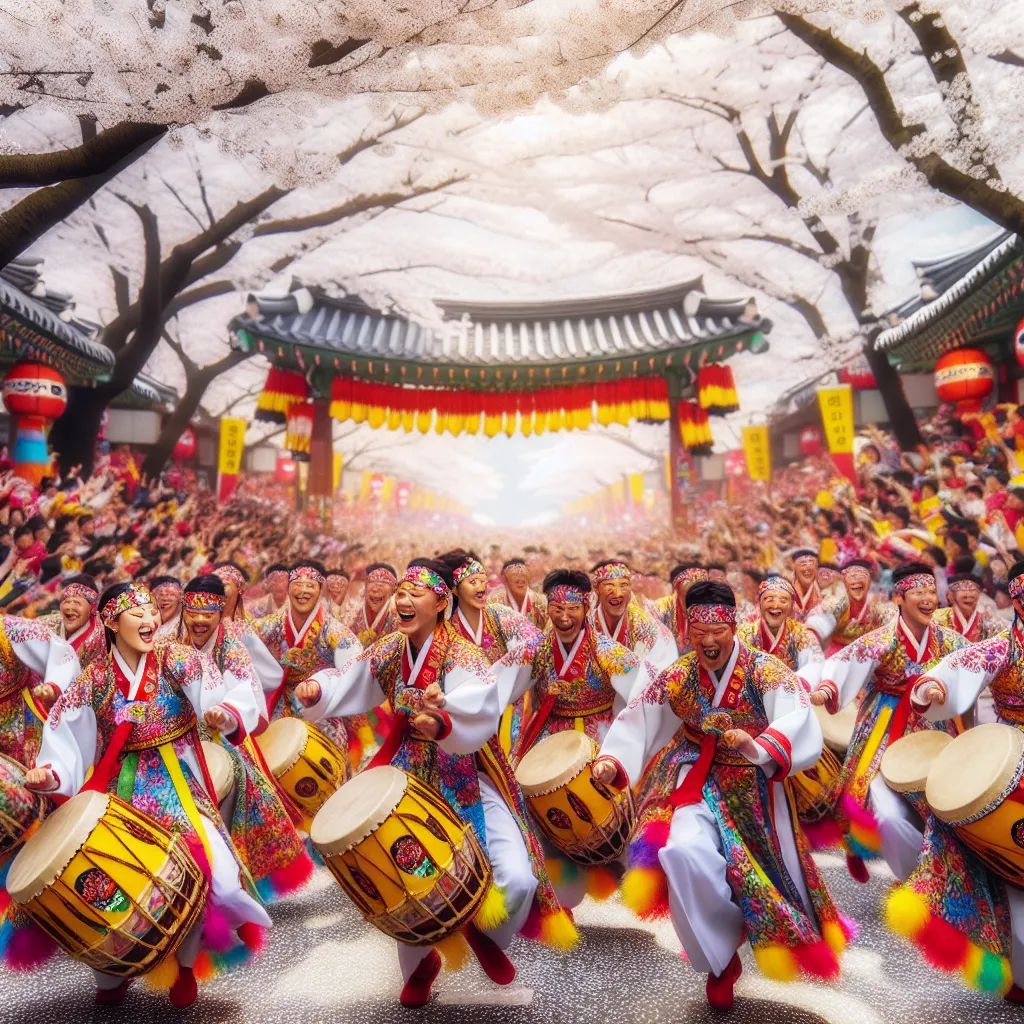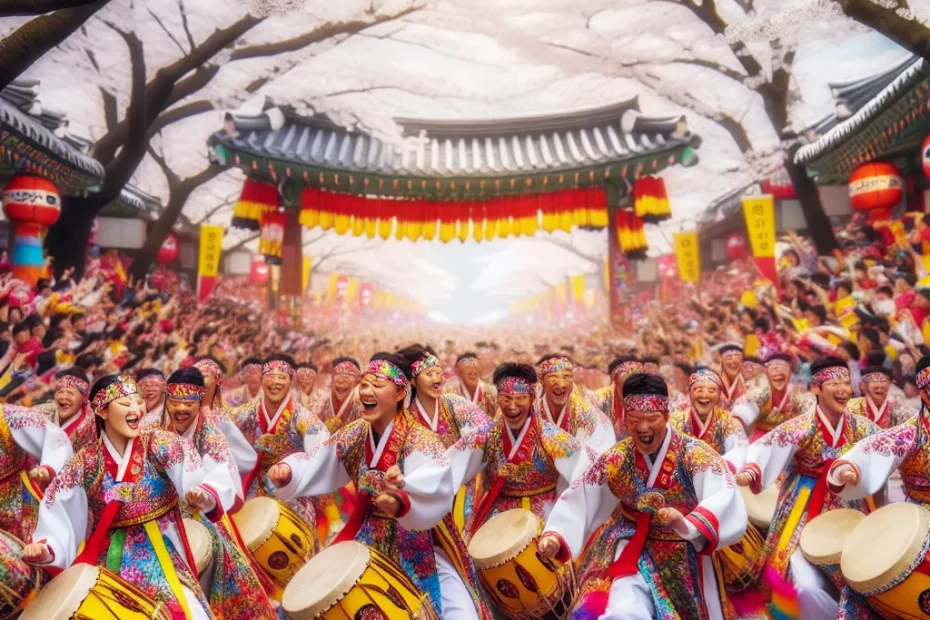As we delve into the rich tapestry of Korean culture, one cannot overlook the vibrant tapestry of spring festivals and folklore. Among these, the Dano Festival stands out as a celebration deeply rooted in tradition and symbolism. Understanding the origins, customs, and significance of this festival provides a window into the soul of Korea’s cultural heritage. From traditional rituals to modern observances, the Dano Festival continues to captivate and inspire, offering a glimpse into the enduring spirit of the Korean people. Join us on a journey to explore the essence of Dano, where history, folklore, and celebration intertwine to create a tapestry of cultural significance.

The Origins of Dano Festival
In the realm of Korean traditional festivals, Dano Festival stands out as a vibrant celebration of spring and folklore. This annual event, which takes place on the 5th day of the 5th lunar month, holds deep cultural significance and offers a fascinating glimpse into Korea’s rich heritage. 🌸
The Origins of Dano Festival
The origins of Dano Festival can be traced back to the ancient kingdom of Silla, where it was known as Surit-nal. During this time, the festival was primarily a shamanistic ritual aimed at warding off evil spirits and ensuring a bountiful harvest. 🌾 Over the centuries, Dano Festival evolved into a more inclusive celebration that combined shamanistic practices with Confucian traditions, reflecting the diverse cultural influences that have shaped Korea’s history. 🏯
Iconic Rituals of Dano Festival
One of the most iconic rituals of Dano Festival is the ssireum wrestling competition, where participants engage in traditional Korean wrestling matches to demonstrate their strength and agility. This ancient sport not only showcases the physical prowess of the competitors but also symbolizes the triumph of good over evil, a central theme of the festival. 💪
Ganggangsullae Dance
Another highlight of Dano Festival is the Ganggangsullae dance, a mesmerizing circle dance performed by women in colorful hanbok dresses. This graceful dance is believed to bring good fortune and prosperity to the community, making it a cherished tradition passed down through generations. 💃
As Dano Festival continues to be celebrated across Korea, it serves as a reminder of the country’s enduring cultural heritage and the importance of preserving traditional customs in a rapidly changing world. By participating in the festivities and honoring the rituals of the past, Koreans pay homage to their ancestors and strengthen the bonds of community spirit. 🎉
In conclusion, Dano Festival is not just a seasonal event but a living testament to Korea’s rich folklore and enduring traditions. By understanding the origins of this vibrant celebration, we gain insight into the cultural tapestry that defines Korea and its people. Let us continue to embrace the spirit of Dano Festival and keep its legacy alive for generations to come. 🌺
Traditional Celebrations and Customs
Dano, also known as Surit-nal, is a traditional Korean holiday celebrated on the 5th day of the 5th month of the lunar calendar. This festival holds great significance in Korean culture as it marks the beginning of summer and is a time to pray for good health and a bountiful harvest. 🌸
Customs and Rituals
During Dano, various customs and rituals are observed to ward off evil spirits and bring good fortune. One of the most popular traditions is the washing of hair with iris-infused water, believed to cleanse the body and drive away bad luck. 🌼
Folk Games and Performances
Another important aspect of Dano is the folk games and performances that take place throughout the day. Traditional activities such as ssireum (Korean wrestling) and ganggangsullae (circle dance) are enjoyed by people of all ages, fostering a sense of community and camaraderie. 🎶
Food and Festivities
Food also plays a central role in Dano celebrations, with special dishes like surichwi tteok (rice cakes with mugwort) and ssuk tteok (rice cakes with azalea petals) being prepared and shared among family and friends. These delicacies are believed to bring prosperity and happiness in the coming year. 🍡
Overall, Dano is a time of joy, unity, and reverence for Korean traditions and folklore. By participating in the festivities and honoring age-old customs, Koreans uphold their cultural heritage and strengthen the bonds that connect them to their ancestors. 🌺
As the vibrant colors of traditional hanbok dresses and the lively sounds of folk music fill the air during Dano, it is clear that this festival is not just a celebration, but a reaffirmation of Korea’s rich history and enduring spirit. Let us cherish and preserve these time-honored traditions for generations to come! 🎉
Symbolism in Dano Festivities
The Dano Festival, also known as Surit-nal, is a significant traditional Korean celebration that takes place on the 5th day of the 5th month of the lunar calendar. This festival holds deep cultural and historical significance, with various rituals and activities symbolizing the arrival of summer and the honoring of ancestors. 🌸
The Symbolism of Ssireum
One of the central symbols of the Dano Festival is the ssireum, a traditional Korean wrestling competition. Ssireum represents the eternal battle between light and darkness, good and evil, with the wrestlers embodying the struggle for balance and harmony in the universe. The physicality of ssireum also symbolizes the cleansing of negative energy and the renewal of spiritual strength. 💪
The Significance of Kite-Flying
Another important aspect of the Dano Festival is the making and hanging of kites. Kites are believed to carry people’s wishes and prayers to the heavens, symbolizing hope, dreams, and aspirations taking flight. The vibrant colors and patterns of the kites represent the beauty and diversity of life, while the act of flying them symbolizes the release of worries and troubles. 🪁
Agricultural Rituals and Harvest Ceremonies
In addition to ssireum and kite-flying, the Dano Festival is also marked by various agricultural rituals. Farmers perform ceremonies to pray for a bountiful harvest, symbolizing gratitude for the earth’s abundance and the cycle of life and renewal. These rituals reflect the deep connection between nature, humanity, and the divine, emphasizing the importance of harmony and balance in the natural world. 🌾
Music and Dance Performances
Furthermore, the traditional music and dance performances during the Dano Festival serve as a means of storytelling and cultural preservation. Through music and dance, ancient myths and legends are brought to life, connecting present-day celebrants with Korea’s rich folklore and heritage. The rhythmic movements and melodies symbolize the unity of the past, present, and future, creating a sense of continuity and tradition. 💃🎶
Overall, the Dano Festival is a time of joy, reflection, and reverence, where symbolism plays a crucial role in connecting individuals with their roots, their community, and the larger cosmos. By participating in Dano festivities, people not only celebrate the changing of seasons but also reaffirm their cultural identity and spiritual beliefs. The intricate symbolism woven into every aspect of the festival serves as a reminder of the enduring values and traditions that have shaped Korean society for centuries. 🎉🌺
Historical Significance and Modern Observance
The Dano Festival, also known as Surit-nal, is a traditional Korean holiday celebrated on the 5th day of the 5th month of the lunar calendar. This festival holds great historical significance as it originated from ancient shamanistic rituals aimed at warding off evil spirits and ensuring a good harvest. 🌸
Historical Significance
During the Three Kingdoms period, Dano was celebrated as a major national holiday, and even today, it remains an important cultural event in South Korea. The festival is deeply rooted in Korean folklore and is a time for people to honor their ancestors and connect with their cultural heritage. 🎎
Iconic Rituals
One of the most iconic rituals of the Dano Festival is the ssireum wrestling competition, where participants engage in traditional Korean wrestling while wearing a jeogori (traditional Korean top) and baji (pants). This competition not only showcases physical strength but also symbolizes the importance of balance and harmony in life. 💪
Modern Observance
Modern observance of the Dano Festival includes various activities such as traditional performances, mask dances, and making and hanging of kites. These activities not only entertain the crowds but also serve as a way to pass down traditional Korean customs and values to future generations. 🎭
In recent years, the Dano Festival has gained popularity among tourists looking to experience authentic Korean culture. The festival offers a glimpse into Korea’s rich history and provides a unique opportunity to witness traditional rituals and customs up close. 🌟
Overall, the Dano Festival continues to be a cherished event in South Korea, blending historical significance with modern observance to create a vibrant celebration of Korean heritage and folklore. 🎉
As we delve into the rich tapestry of Korea’s Dano Festival and its deep-rooted folklore, we uncover a cultural celebration that transcends time. The customs and traditions observed during this festival offer a window into the past, revealing the essence of Korean heritage. Through the symbolic rituals and festivities, we gain insight into the values and beliefs cherished by generations. The historical significance of Dano Festival continues to resonate in modern times, serving as a reminder of the enduring spirit of the Korean people. Embracing the essence of spring and the wisdom of tradition, Dano Festival stands as a testament to the resilience and cultural pride of Korea.
